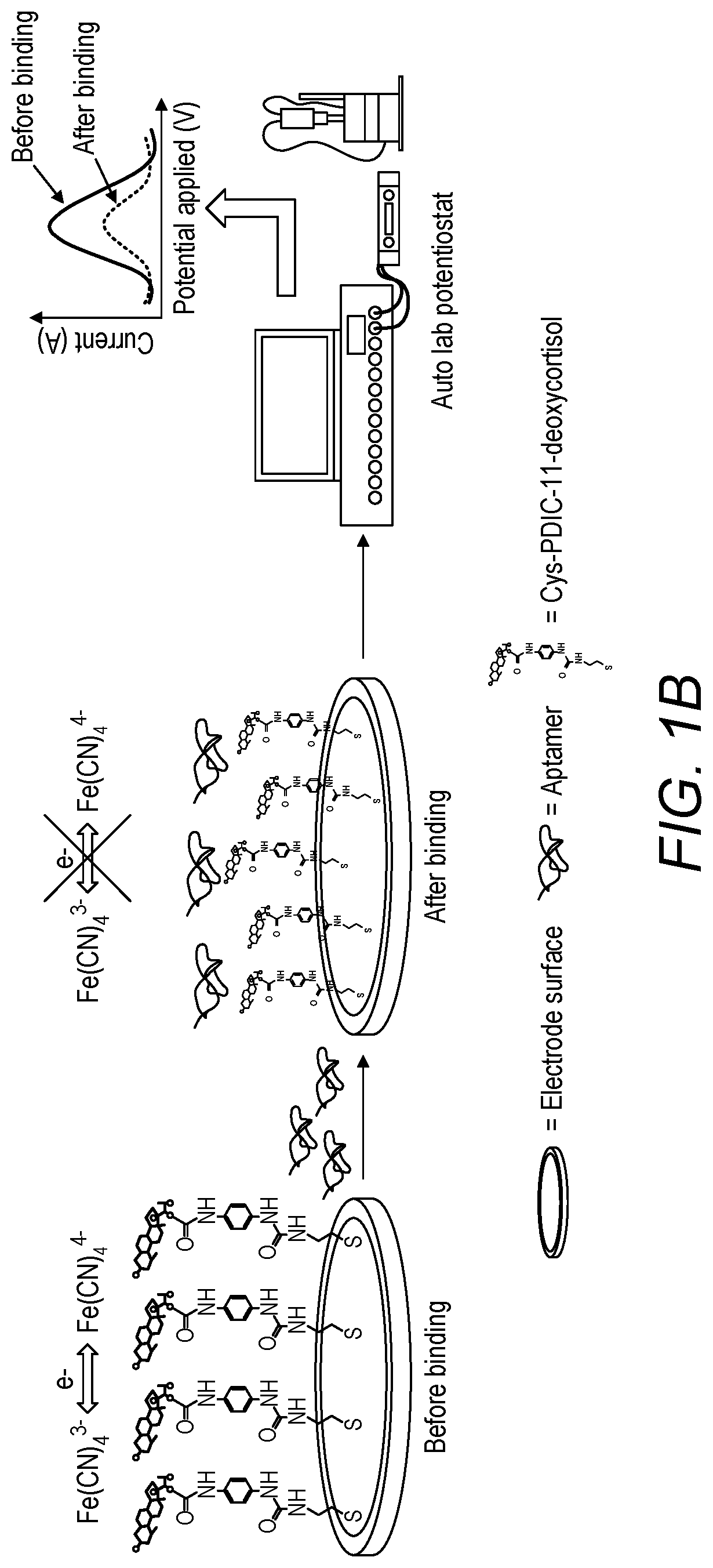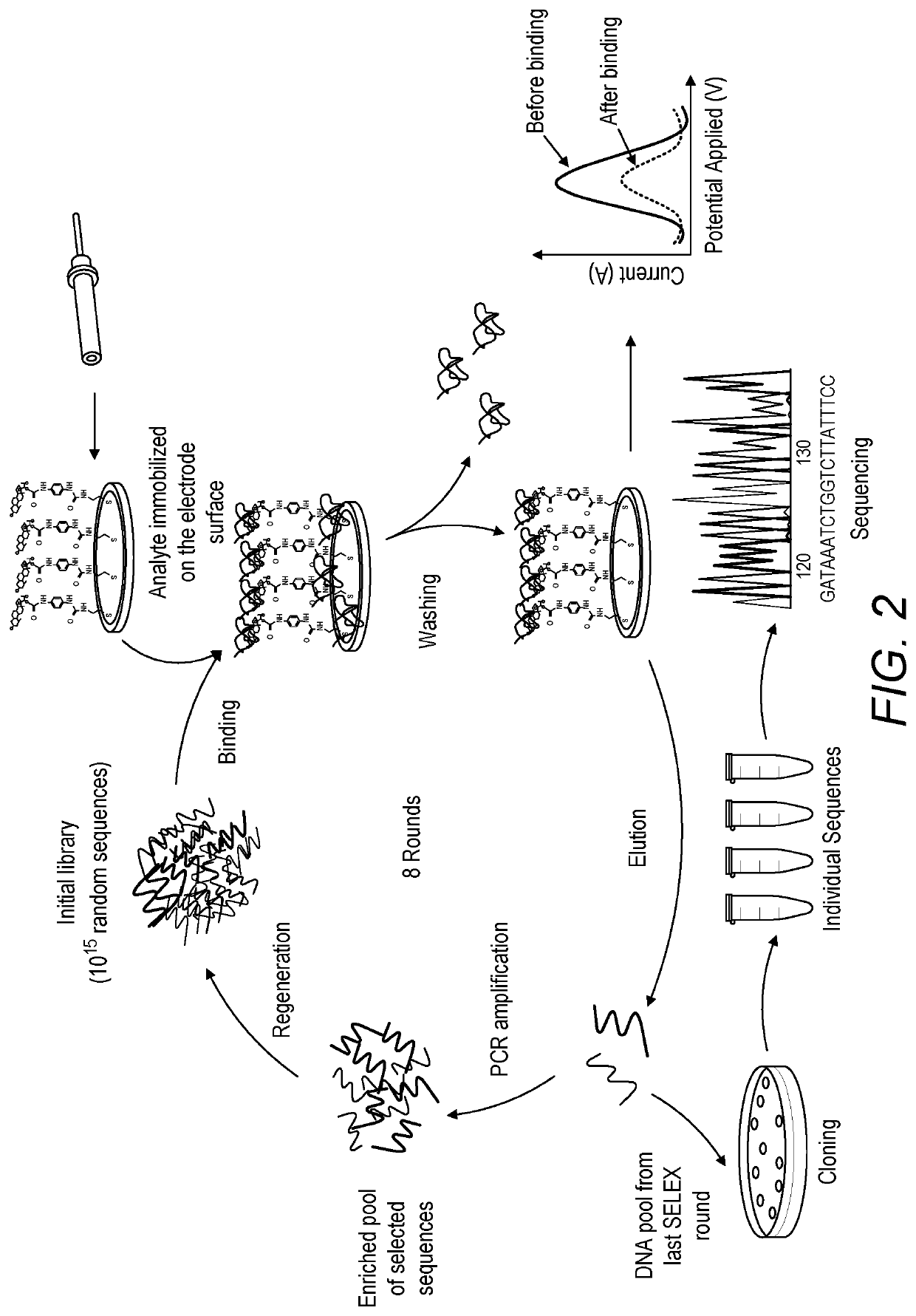Electrochemical screening for the selection of DNA aptamers
a technology of aptamers and electrochemical screening, applied in the field of electrochemical screening, can solve the problems of limited number of aptamers that have been successfully identified, laborious, time-consuming and sometime inefficient, and the selex process is expensive,
- Summary
- Abstract
- Description
- Claims
- Application Information
AI Technical Summary
Benefits of technology
Problems solved by technology
Method used
Image
Examples
Embodiment Construction
[0024]The instant application describes a novel electrochemical-based SELEX method for efficient low-cost and rapid selection of DNA aptamers. In our electrochemical-based SELEX, the target analyte is covalently immobilized on gold electrode surface. The interaction of the single stranded DNA library and the target-modified electrodes can be directly monitored voltammetrically by measuring the current of the electrodes in ferro / ferricyanide redox couple. The non-bound or weakly bound sequences can be easily and effectively removed through a washing process within 1 min. The platform is used to perform the negative and positive selection in order to improve the specificity of the selection. Compared to the conventional SELEX, the electrochemical-SELEX approach can eliminate the need of DNA labelling which significantly reduces the cost of the procedure. Moreover, the use of electrodes as solid matrix for target immobilization reduces the time of the washing and elution steps and allo...
PUM
 Login to View More
Login to View More Abstract
Description
Claims
Application Information
 Login to View More
Login to View More - R&D Engineer
- R&D Manager
- IP Professional
- Industry Leading Data Capabilities
- Powerful AI technology
- Patent DNA Extraction
Browse by: Latest US Patents, China's latest patents, Technical Efficacy Thesaurus, Application Domain, Technology Topic, Popular Technical Reports.
© 2024 PatSnap. All rights reserved.Legal|Privacy policy|Modern Slavery Act Transparency Statement|Sitemap|About US| Contact US: help@patsnap.com










